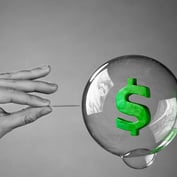(Bloomberg) — The cost of living in the U.S. declined in December by the most in six years, reflecting a plunge in energy costs that’s keeping inflation from rising toward the Federal Reserve’s goal.
The consumer price index dropped 0.4 percent, the biggest decline since December 2008, after falling 0.3 percent in November, a Labor Department report showed Friday in Washington. The median forecast of 89 economists surveyed by Bloomberg called for a 0.4 percent decline. Excluding volatile food and fuel, the so-called core measure was unchanged, failing to rise for only the second time since 2010.
The biggest drop in clothing costs since 1998 combined with falling air fares and cheaper new and used cars signal the deceleration in inflation is spreading beyond energy as Japan and Europe are in or near a recession and some emerging markets cool. Sustained broad-based price declines test Federal Reserve Chair Janet Yellen’s view that the drop in fuel won’t reverberate through the economy.
“This is a number that consumers will love but economists will worry about,” said Russell Price, senior economist at Ameriprise Financial Inc. in Detroit, who correctly projected the year-over-year change in the core index. As plunging commodity prices “filter through the system, it should take nine months to a year, then we should start to see inflation in the U.S. and around the world start to pick back up.”
CPI estimates in the Bloomberg survey ranged from a 0.8 percent drop to a 0.1 percent advance. Standard & Poor’s 500 Index futures expiring in March fell 0.3 percent to 1,984.10 at 8:57 a.m. in New York.
Core rate
The unchanged reading in the core gauge followed a 0.1 percent rise in November. Economists had forecast a 0.1 percent gain, according to the survey median. Overall, consumer prices rose 0.8 percent in the 12 months ended in December, the smallest year-to-year gain since October 2009.
Prices were up 1.3 percent the prior month.
The core measure increased 1.6 percent from December 2013 after climbing 1.7 percent.
Energy costs slumped 4.7 percent in December from a month earlier, the most since December 2008.
Prices at the pump have been declining since the middle of last year, helping to cushion household budgets. The average price of a gallon of regular unleaded gas was $2.08 on Jan. 15, its lowest level since May 2009, according to data from auto group AAA.
Grocery chain








 January 16, 2015 at 05:47 AM
January 16, 2015 at 05:47 AM










